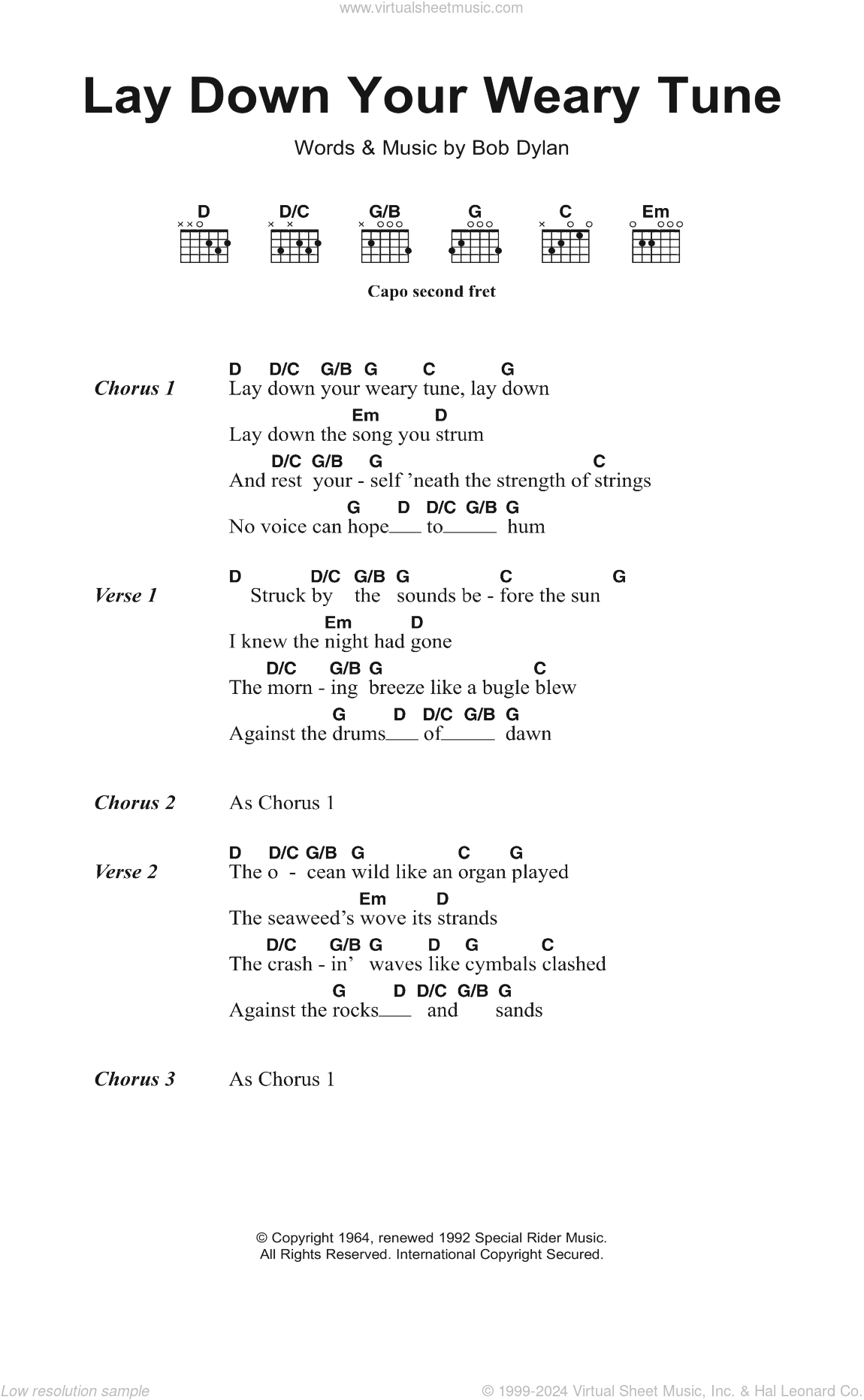

Lay down your weary tune the byrds series#
The verses do not attempt to tell a story, but provide a series of images of nature. The version of the melody used for the chorus has greater guitar accompaniment than the verses, based on the chords of A major, D major and E major, providing a literal "strength of strings" to the chorus. The song's chorus and five verses share a similar fourteen bar melody, although the melody is varied slightly each time. The text alternates between lines of four and three feet, which is a metric pattern shared by ballad stanzas and many hymns, referred to generally as common measure. The song is in the key of A major, and begins with the chorus: Lay down your weary tune, lay down Lay down the song you strum And rest yourself 'neath the strength of strings No voice can hope to hum. Webb has linked many of the images of the song to the Bible and calls it "one of the greatest theological songs since King David composed his psalms." Music and parallels Music critic Michael Gray interprets the song as "a vision of the world, that is, in which nature appears not as a manifestation of God but as containing God in every aspect." Christian theologian Stephen H. In his controversial 1970 article "Bob Dylan and the Poetry of Salvation", sociologist Steven Goldberg identified it as a song with which Dylan's focus changed from politics to mysticism. Like Williams, author Seth Rogovoy similarly interpreted it as a song devoted to Dylan's musical muse, like the later "Mr. Williams has also noted that throughout the song we hear Dylan struggling to put into words the melody that haunts him. Music critic Robert Shelton has described "Lay Down Your Weary Tune" as Dylan's "first withdrawal song", while journalist Paul Williams interpreted it as Dylan describing an auditory "vision" of a message from the universe or deity personified in music. In the interim, Dylan played "Lay Down Your Weary Tune" at a concert at Carnegie Hall on October 26, a performance that was eventually released on the album Live at Carnegie Hall 1963. However, he decided to replace it on the album with the song "Restless Farewell", a song he wrote as an angry response to a Newsweek reporter who in late October 1963 published a story about Dylan that Dylan did not approve of.

Dylan recorded the song in a single take on October 24, 1963, during the sessions for The Times They Are a-Changin. Dylan had originally wanted to sing "Lay Down Your Weary Tune" with Baez at her Octoconcert at the Hollywood Bowl, but Baez was not yet comfortable with the song. During the same visit, he also wrote the song "The Lonesome Death of Hattie Carroll". Dylan wrote the song at Joan Baez's house in Carmel, California in the autumn of 1963.


 0 kommentar(er)
0 kommentar(er)
